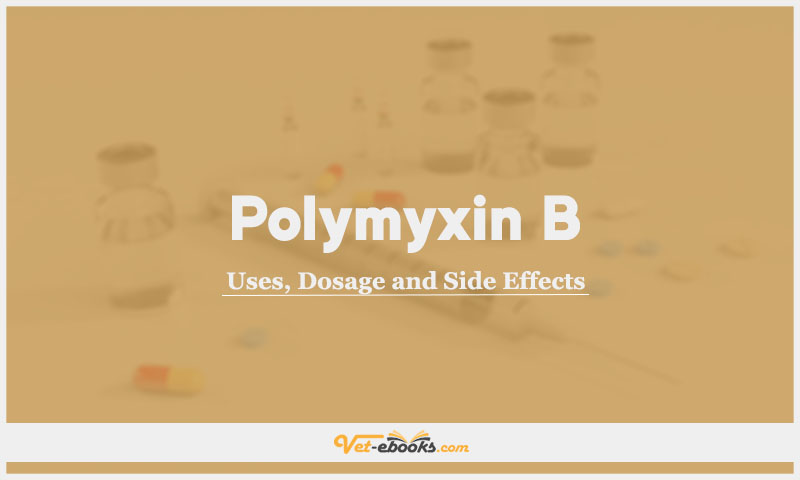Polymyxin B In Dogs & Cats: Uses, Dosage and Side Effects

Overview
- Concentration-dependent disruption of the outer membrane of Gram-negative bacteria through its action as a cationic surface-acting agent.
Uses of Polymyxin B
- Effective against Gram-negative organisms; Gram-positives usually resistant.
- Particularly effective in the treatment of external pseudomonal infections, e.g. keratoconjunctivitis, and otitis external.
- Polymyxins are too toxic for systemic use and because of their strongly basic nature are not absorbed from the GI tract.
Dose of Polymyxin B in Dogs and Cats
Dogs, Cats:
- Skin: apply a few drops and rub in well q12h.
- Otic: clean the ear and apply a few drops into the affected ear q12h.
- Ophthalmic: apply ointment q6–8h.
Drug Dosage Calculator
You Should Give:
Side Effects of Polymyxin B in Dogs and Cats
- Should not be used systemically as is nephrotoxic. Potentially ototoxic.
Contraindications of Polymyxin B in Dogs and Cats
- Do not use if the tympanum is ruptured.
Some Notes:
- Acts synergistically with some other antibacterial agents as it disrupts the outer and cytoplasmic membranes, thus improving penetration of other agents into
bacterial cells. - Cationic detergents (e.g. chlorhexidine) and chelating agents (e.g. EDTA) potentiate the antibacterial effects of polymyxin B against Pseudomonas aeruginosa.
Tip
Do You Want To Increase Your Veterinary Knowledge and Practical Skills?
You Can Now Browse and Download +3000 Books For Veterinary Professionals & Students Online.
Download Veterinary Books



















